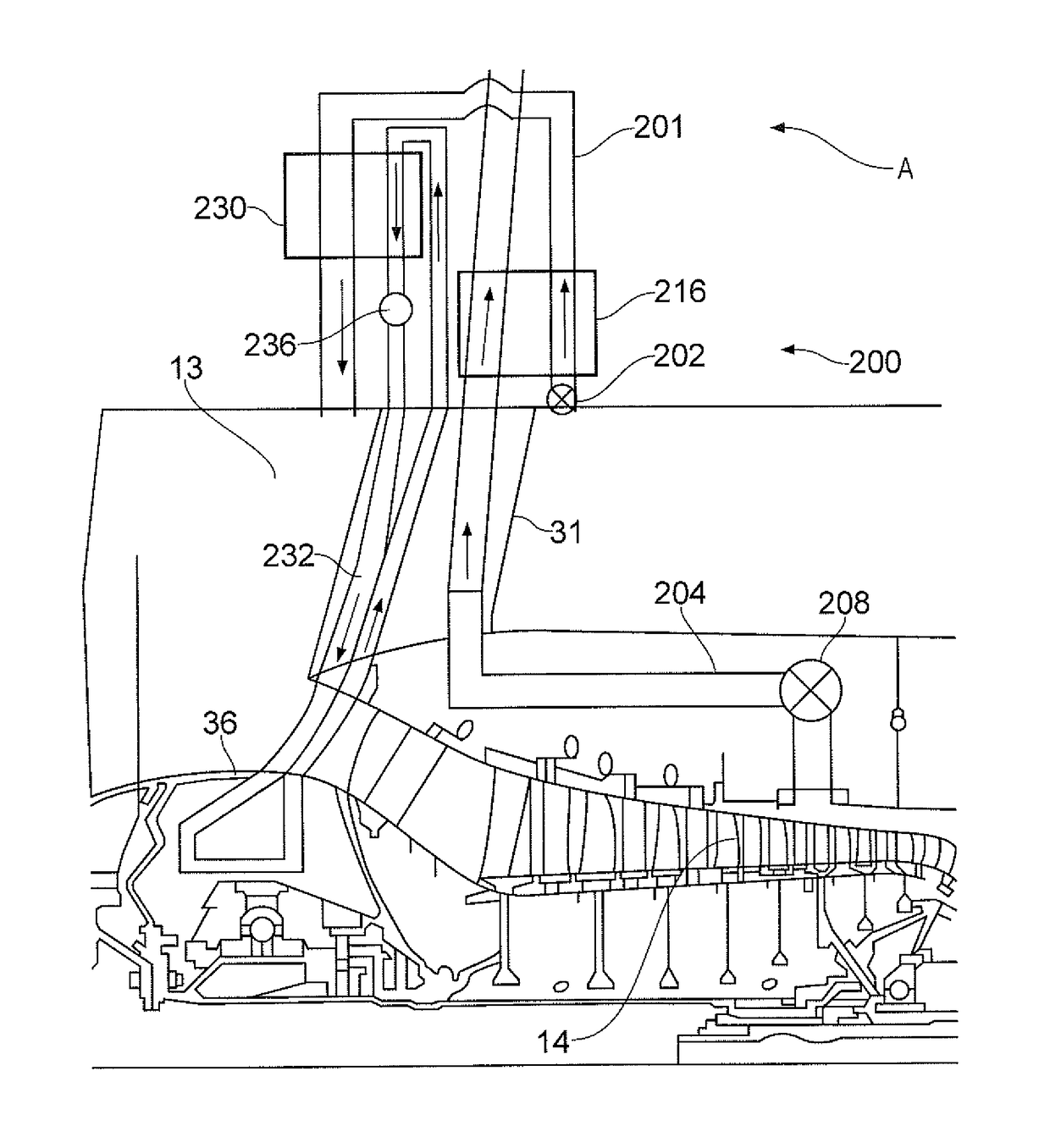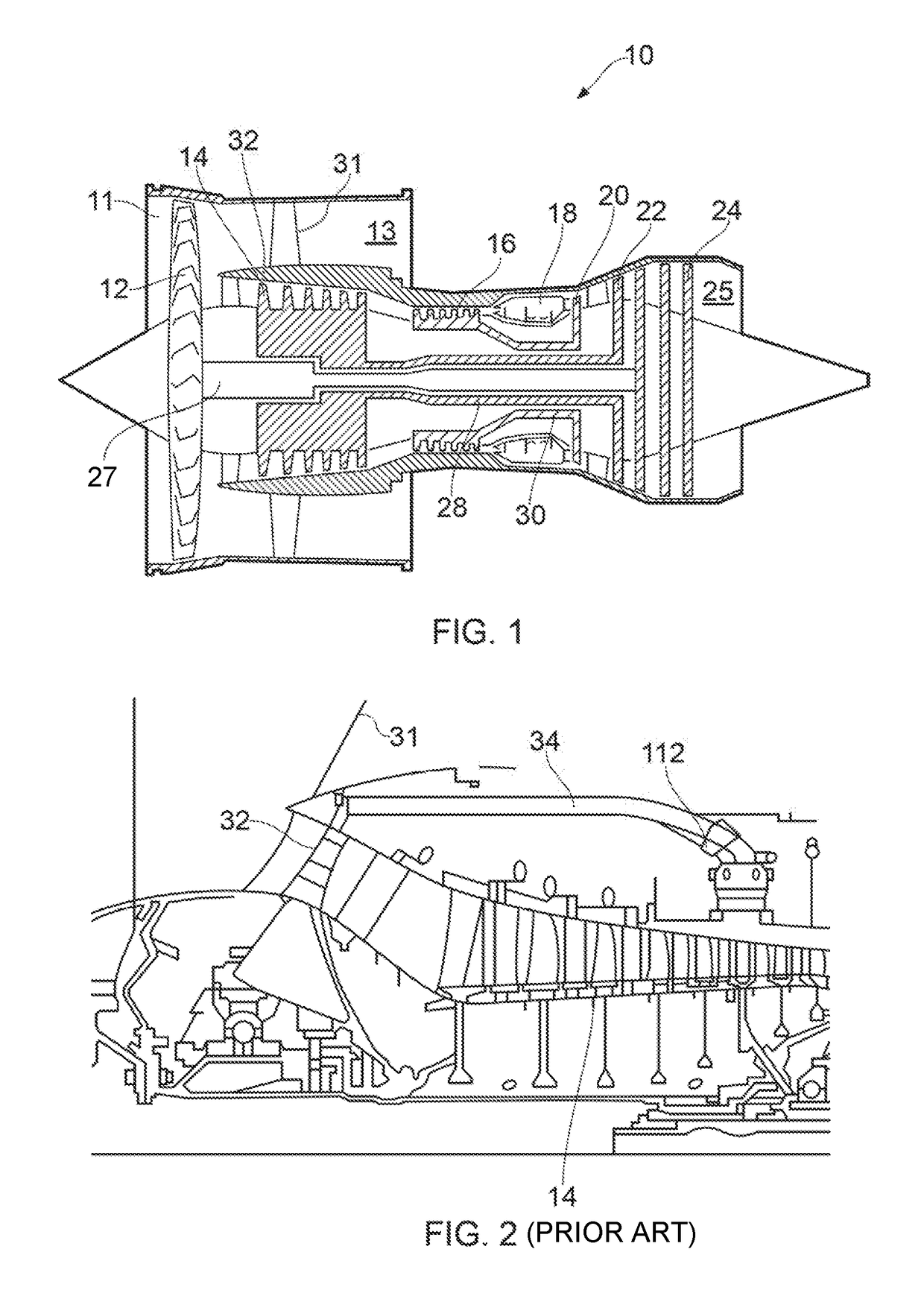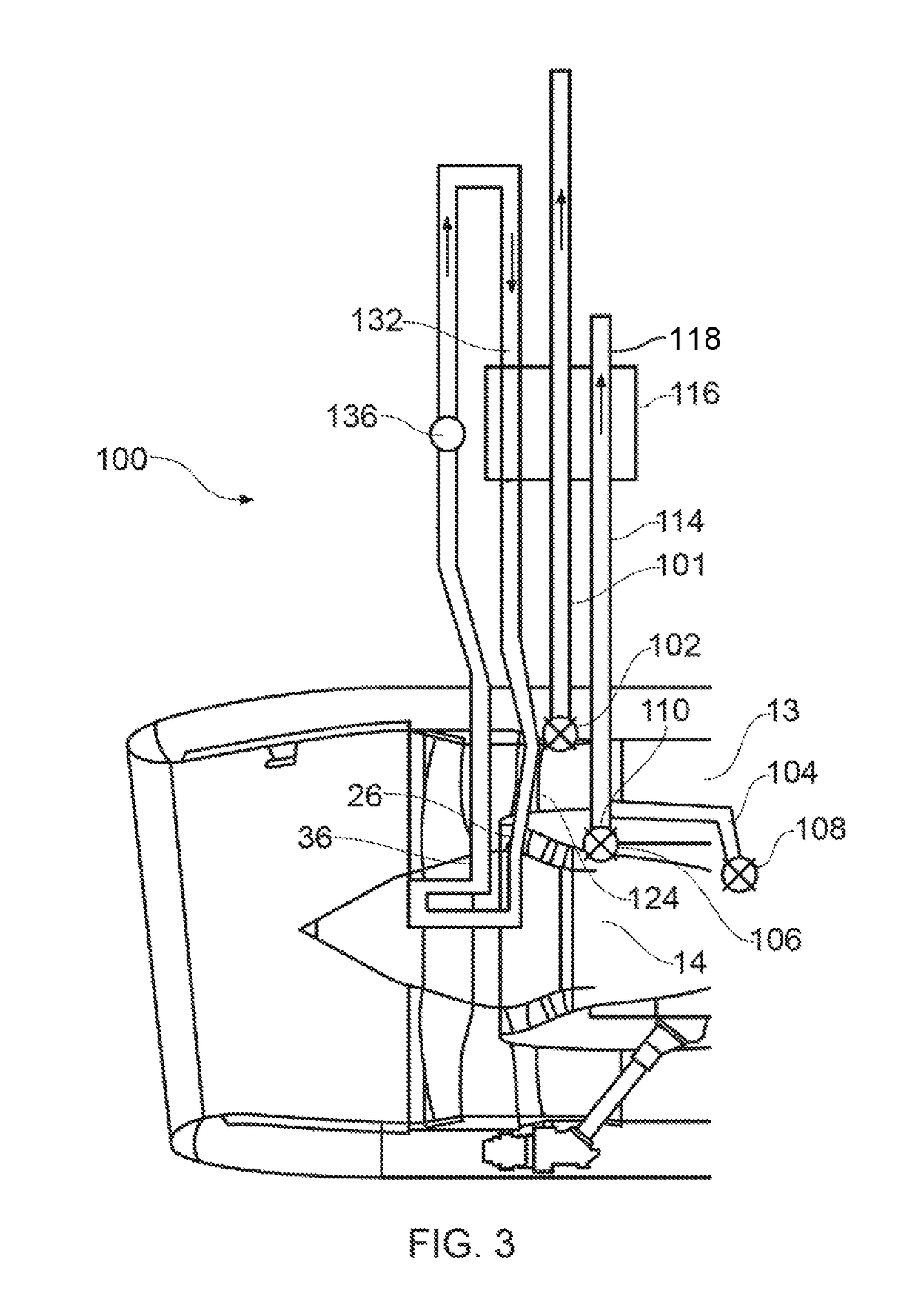Gas turbine engine anti-icing system
a technology for gas turbine engines and anti-icing, which is applied in the direction of engines, efficient propulsion technologies, machines/engines, etc., can solve the problems of reducing the aerodynamic performance of ess, damage to downstream components, and ess is prone to ice buildup in use, so as to increase the thermodynamic efficiency of the engine and achieve the effect of sufficient energy
- Summary
- Abstract
- Description
- Claims
- Application Information
AI Technical Summary
Benefits of technology
Problems solved by technology
Method used
Image
Examples
Embodiment Construction
[0025]FIG. 3 shows a first anti-icing system 100 for use with a gas turbine engine such as engine 10 shown in FIG. 1. The system is shown schematically, and does not represent actual sizes and positions of components.
[0026]The system 100 comprises a bypass air passage 101 which is configured to receive cool air at slightly above ambient pressure from the bypass duct 13. The passage 101 includes a flow valve 102 at an inlet thereof, which regulates mass flow through the passage 101 in use in accordance with signals received from a controller such as FADEC (not shown).
[0027]High pressure and intermediate pressure compressor bleed passages 104, 106 are also provided, which provide high pressure air from the high pressure and intermediate pressure compressors 14, 16 respectively of engine 10. Valves 108, 110 are provided, to regulate mass flow through the respective passages 104, 106. Again, these valves 108, 110 are controlled by FADEC. Air from the high and intermediate pressure bleed...
PUM
 Login to View More
Login to View More Abstract
Description
Claims
Application Information
 Login to View More
Login to View More - R&D
- Intellectual Property
- Life Sciences
- Materials
- Tech Scout
- Unparalleled Data Quality
- Higher Quality Content
- 60% Fewer Hallucinations
Browse by: Latest US Patents, China's latest patents, Technical Efficacy Thesaurus, Application Domain, Technology Topic, Popular Technical Reports.
© 2025 PatSnap. All rights reserved.Legal|Privacy policy|Modern Slavery Act Transparency Statement|Sitemap|About US| Contact US: help@patsnap.com



